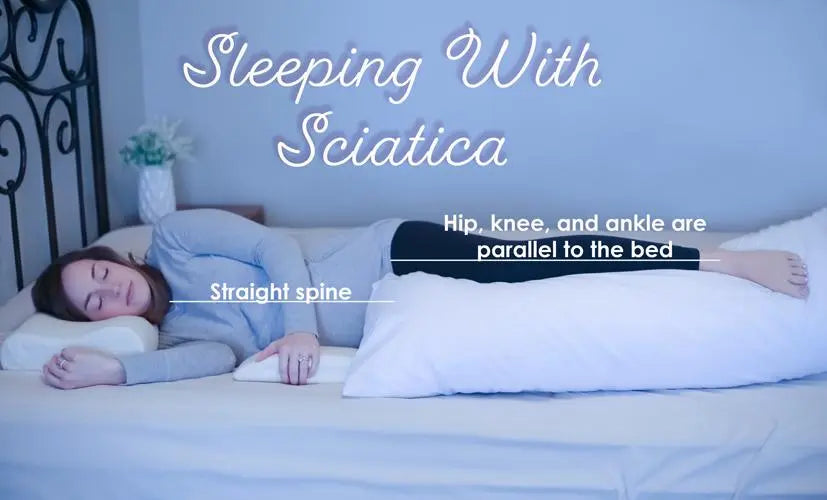Before your TKA (total knee arthroplasty) surgery, you might begin to feel a little anxious about your recovery. Keep reading to learn why using a wedge pillow after knee replacement is key to your success.
Why use a wedge pillow for knee replacement?
A wedge pillow for knee surgery is one tool that will help aid your recovery. After the procedure, your entire leg will be swollen. Elevating your legs will aid your body in eliminating leg swelling. The quicker the swelling goes down, the quicker your recovery will be. Elevating your legs for 15-20 minutes, several times a day will aid your body in eliminating leg swelling.
Another way to utilize a wedge pillow after knee replacement is to perform simple exercises while you elevate. When you perform exercises on your wedge pillow (like ankle pumps and ankle circles) it helps the swelling go down even faster.
The knee replacement wedge pillow can also be moved down towards the foot of the bed and used as an ankle prop. Resting with your heel on the wedge and leg as straight as possible, though uncomfortable, is essential. This position will stretch the back of your knee so it will eventually be straight. As you advance, you can perform ankle pumps and ankle circles in this heel prop position.
A wedge pillow for knee replacement also helps to prevent back pain. For the first few weeks after surgery, you will be spending a more-than-normal amount of time in bed. Lying flat in bed can increase tension on your low back and hips. Resting the weight of your legs on a wedge pillow will immediately take pressure off your back.
When sleeping at night, sleep with your non-surgical leg on the leg wedge pillow and your surgical knee extended on the bed. This will relieve your back and allows your surgical leg to be straight. Prop your surgical leg on the wedge pillow for 15-20 minutes when, or if, you need relief.
When elevating on a wedge pillow, elevate 15-20 minutes at a time, several times a day, and be sure to flex and extend your knee in between! After any knee surgery, especially a total knee replacement, it is very important to get your full range of motion back. You will want to avoid lying in bed with your knee bent for long periods of time. Moving your knee regularly is the fastest way to recover!
Returning to side sleeping using after a knee replacement
Immediately after surgery it will be difficult to get into a side lying position. However, after a few weeks you might be wanting to return to sleeping on your side. You will not be able to sleep on your side without a between the knees wedge pillow. The pressure of one knee on top of another, without a pillow, is often unbearable.
You are going to want to have a leg separator pillow. Not just any leg separator pillow. Look for one that is long, running at least from your pubic bone to past your feet. It should support your top leg so that it is parallel with the bed. Your hip, knee, and ankle should be the same height. This ensures your back and hip muscles are completely at rest. It will also provide cushion for your knee.
Need help with knee extension?
A leg elevation pillow with contours can help if you find yourself struggling with knee extension. The contours cradle the natural shape of your legs while keeping your knee in an extended position. This position can also improve circulation and reduce swelling in your leg.
A knee replacement wedge pillow helps you recover from your knee surgery. Do everything you can to prepare by getting tools you need to guarantee your success!
-Hillary Blare, Doctor of Physical Therapy




